10 Most Beautiful Lakes in Nepal
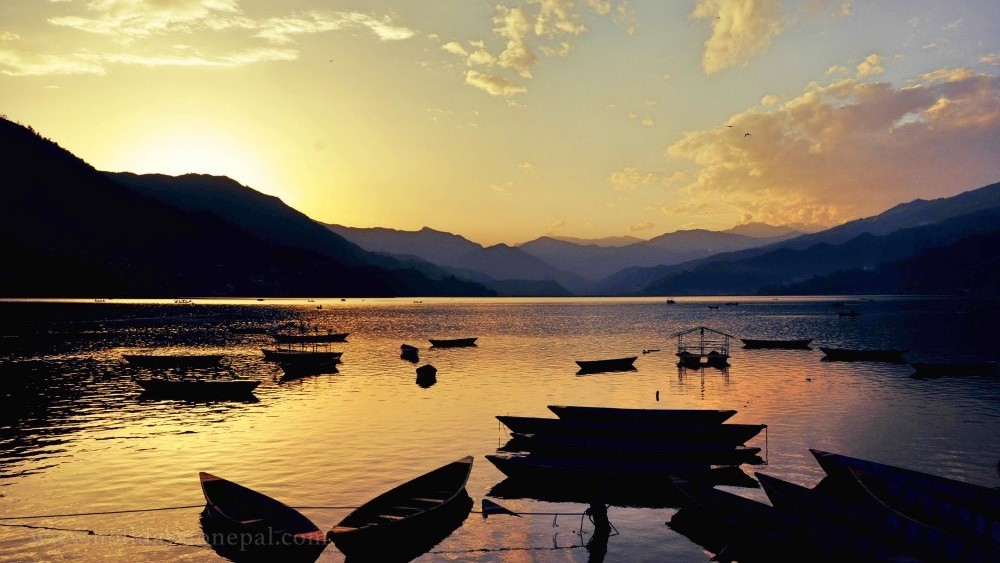
Nepal is a highly divergent country with its immense natural beauty. It is inexplicable in words to explain Nepal's astonishment and the splendour of the snowy Himalaya peaks. Nepal with huge natural beauty possesses some of the most beautiful lakes where numberless people visit from all over the world. Nepal is god-gifted land with a large number of lakes that take everyone’s breath away. Lakes in Nepal are one of the awe-inspiring attractions among travellers. Featured here are some wonderful lakes that will obviously compel you to make Nepal on your next target to visit.
Rara Lake
Rara, the deepest lake in the Nepal Himalayas, lies at an altitude of 2990meters above sea level covering an area of 10.8km2. Located in Jumla and Mugu districts, it drains into the Mugu Karnali River via the Nijar River. The water of Rara is characterized by high PH and the fresh water is expanded about 5 kilometers in length and 3 kilometers in width. Situated in high altitude, surrounded by Rara National Park with pine, spruce, and juniper forest , it was declared a Ramsar site in 2007.
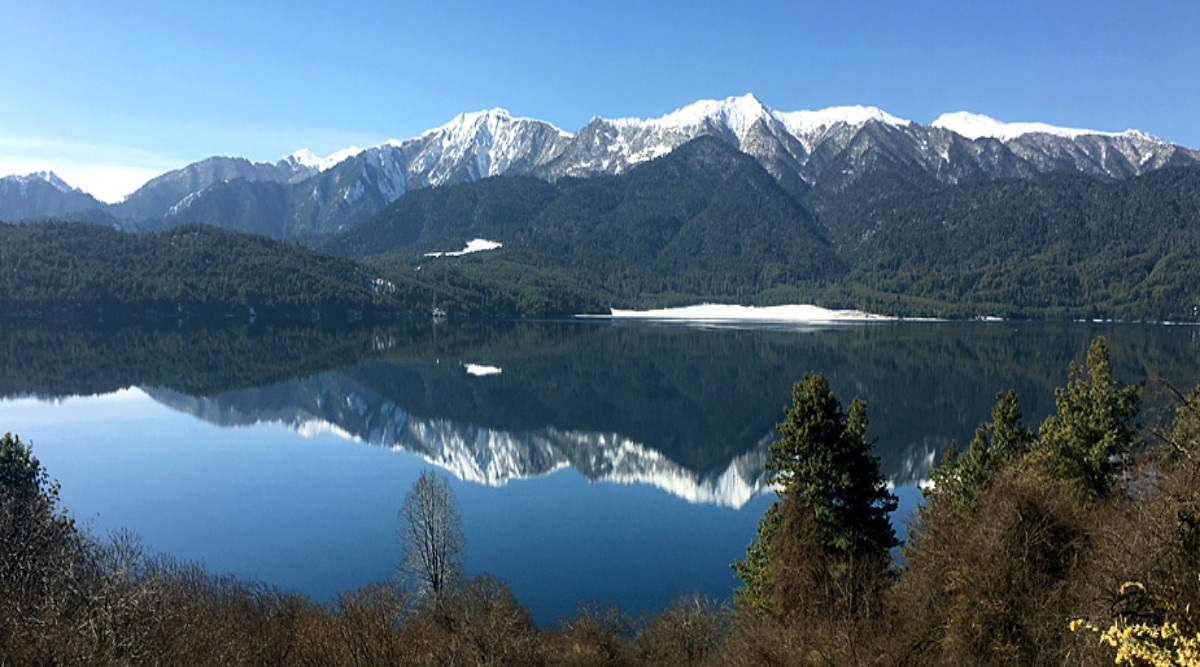
Furthermore,it has extraordinary floral and faunal significance with rare species. The lake holds three endemic fish species and one endemic frog. Winter visitor water birds reside and rest at this lake. More basically, the colour of the Rara lake changes three times a day. Sometimes, it seems to be blue, and sometimes brown and sometimes it seems to be purple and crimson. The scene of Rara becomes enchanting when it mingles with the shadow of Sinje and Kanjirowa mountains.
A place to contemplate and to have tranquillity, Rara is becoming the next target for all visitors all over the world. The number of tourists visiting the Rara lake in western Nepal has increased tremendously. Boating in clear waters, hiking to nearby hills with peculiar views of magnificent mountains and the breathtaking scenes around the lake make every traveller contemplate. The views of the Himalayan peaks intensify the captivation of every trekker.
The perfect time to visit the lake is September/October and April to May. For trekkers, it has been a very renowned destination with a very tough route in Western Nepal. As air is the only mode of transportation for the tourists visiting the lake, the journey begins with a flight from Nepalgunj to Jumla from where it takes nearly 2 to 3 hours to reach Rara on foot.
Phewa Lake (Fewa Lake)
Pokhara walked away with colossal popularity as one of the top tourist destinations in Nepal because of the boundless Himalaya ranges, sacred places, rivers, cultural heritage, peculiar caves, floras and fountains, etc. It is also renowned for its recognition as a City of Nine Lakes. Amidst the nine lakes, Phewa Lake is considered to be the largest lake in the Pokhara valley and second largest lakes in Nepal. Formerly known as Badam Tal, Phewa lake is located in the south of the Pokhara valley covering an area of 4.43km2. The average depth of the lake is 8.6 m. and the maximum depth is 19m. It spreads 4km from north-west to the north-east. Located at an altitude of 742m, the peripheral area of the lake is around 443 hectares.
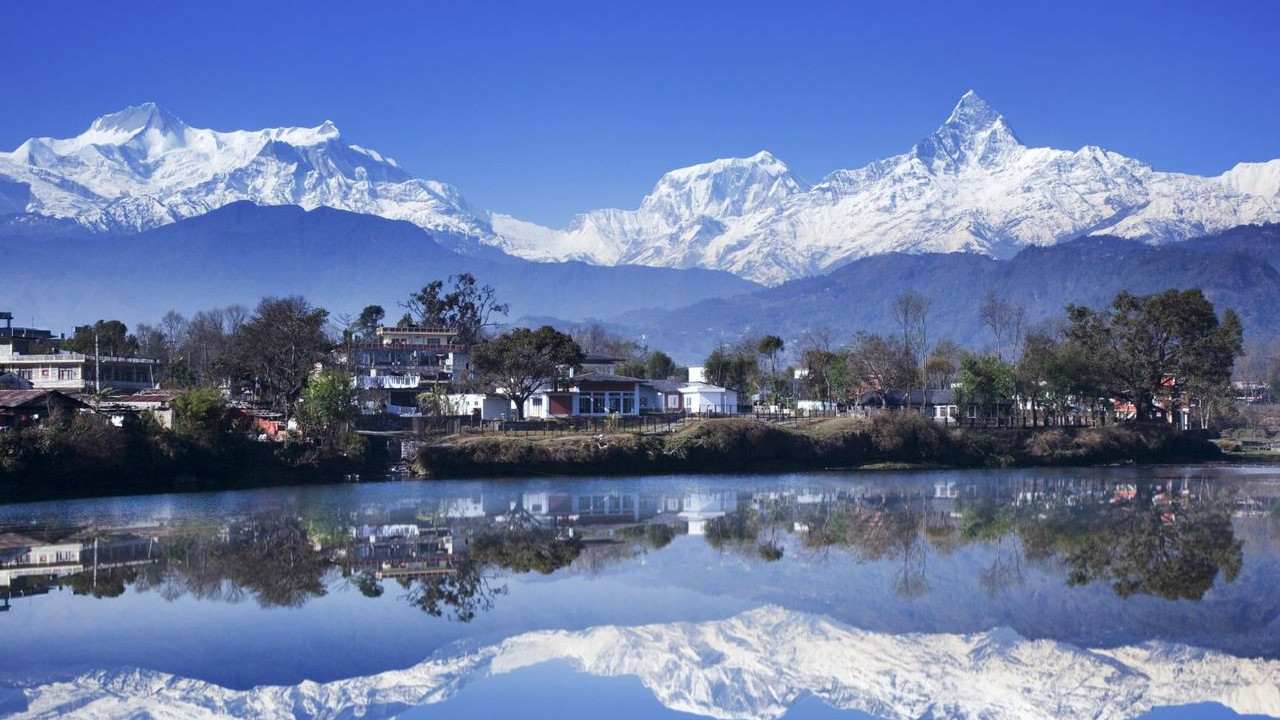
Phewa lake has gained its significance from various perspectives in Pokhara. It is socially, economically, culturally as well as a ritually important place. Phewa lake is one of the most precious treasures for the burgeoning of tourism in Pokhara. Phewa lake is the centre of captivation for tourists and it is the major tourist hub in Nepal. It’s an immensely beautiful and enchanting place, renowned for venturesome and entertaining activities. The major attraction of Phewa lake is boating. Boating in the crystal clear water with bare hands makes a more delightful moment.
Moreover, Because of the Taal Barahi Temple that is located in the centre of Phewa lake, the place has got immense cultural significance. The next beautiful aspect of Phewa lake is the bird watching and “Paragliding’’. Phewa lake is considered as one of the prominent places for Paragliding. Many paragliding flights take off from its place beside the Phewa Lake which is the major attraction of this lake. In addition, it is also famous for various dishes of fishes that are found in lakes. Tourists are drawn here to taste the delicious dishes of fresh fish. There are many restaurants around the lake especially having the dishes of fish. The lake has become a livelihood for fishermen who have supported their life by fishing for many years.
Besides, the Annapurna range on the north is only about 28 km away from the lake and the lake is famous for the reflection of mount Machhapuchhre and other mountain peaks of the Annapurna and Dhaulagiri ranges on its surface.
Begnas Lake
Located in Pokhara Lekhnath Metropolis of Kaski district of Nepal, Begnas lake is considered to be the best tourist attraction of western Nepal. This lake is regarded as the third largest lake of Nepal and the second largest of the Pokhara Valley. It is away from the hectic rush of city life. It is quiet, clean and tranquil. In addition, it is home to varieties of birds which have come to Nepal during the time of bird migration. Water sport, typical Nepali western culture and freshwater boating are the points of attraction of this place. It is one of the most beautiful lakes in Nepal.
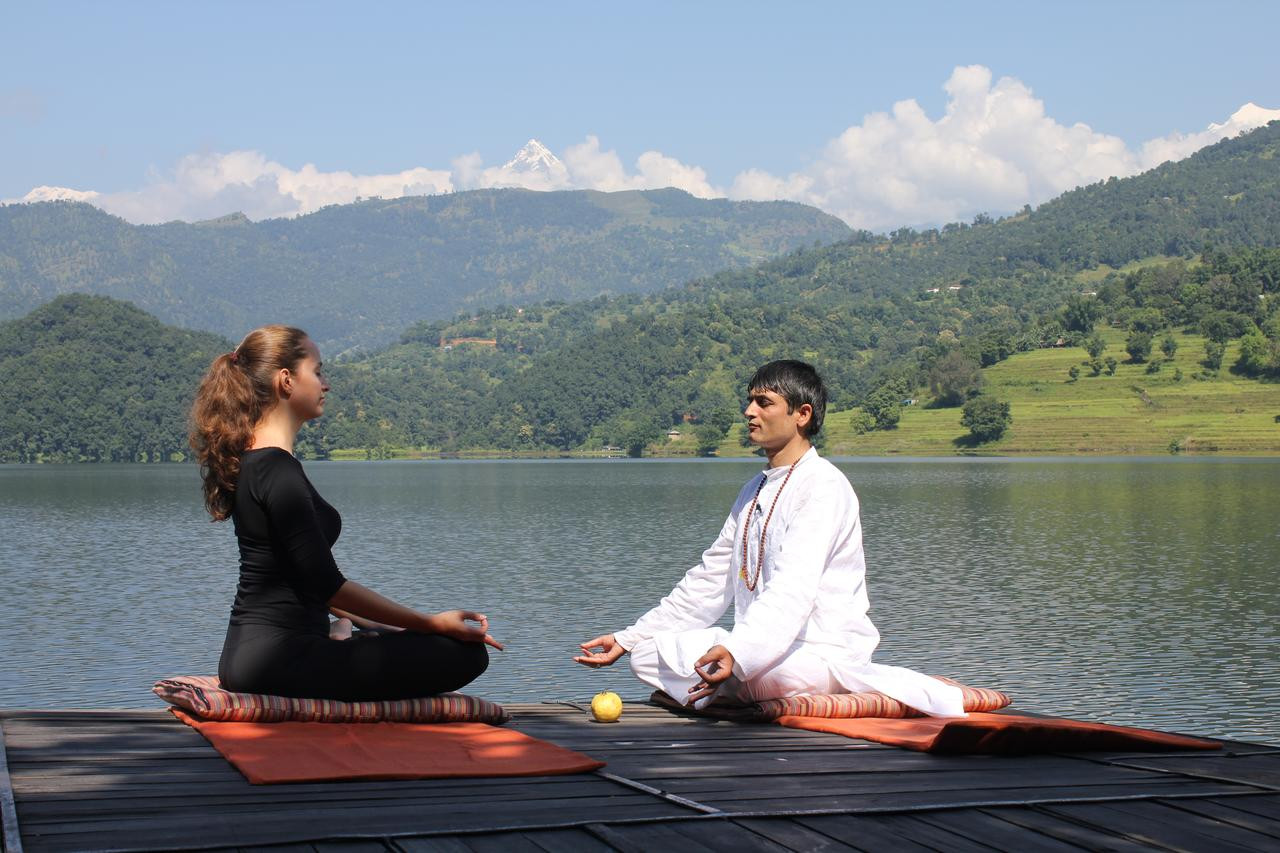
The lake provides the charming beauty of nature. The shadow of the surrounding hills on the crystal clear water is the focal point of Begnas Tal. By observing the pure and pristine beauty of nature, one can contemplate. To explore the beautiful lake and its surrounding, boating is the good option.
Shey Phoksundo Lake
Situated at an elevation of 3,611.5m above the sea level, Phoksundo lake is the most renowned trekking destination in Nepal that lies in Dolpa district. It is 494 hectares in size with a water volume of 409,000,000m3. Declared a Ramsar site in 2007, it is known for its elegant turquoise colour. It has 20 stupas in the southern belt, and one gompa on the eastern side of the lake where annual prayers and worship are fulfilled. The lake is one of the popular lakes in Nepal for high altitude and pristine trekking.

Besides, its extreme apex and location are quite awe-inspiring attractions for tourists all over the world. Categorized as an oligotrophic lake, it has a maximum depth of 145 meters. It’s an embodiment of natural beauty surrounded by mountain-fed glaciers and the mesmerizing beauty of the entire scenario makes every traveller feel contemplated. It is believed that the origin of the lake goes to the village called Ringmo that lies on the southern end of the lake that sits on a 30,000-40,000-year-old landslide dam. And, there is the waterfall right past the dam. People nearby the lake are influenced by Tibetan culture and languages. To visit Shey Phoksundo lake in the perfect time is from the months of March to May and September to November because of the favourable temperature and weather.
Tilicho Lake
Tilicho Lake is one of the highest lakes in the world situated at an altitude of 4,919meter in Manang district and around 55kilometers away from the hectic rush of Pokhara city. Tilicho, a renowned tourist destination, is a glacial lake that lies in the Annapurna range of the Himalayas. Also, it is very popular for hiking. Hiking in this place goes through the Annapurna Circuit trek which takes an extra 3/ 4 days to outreach the base camp of Tilicho. Tilicho lake provides an adventurous journey to the daredevil person who loves to hold the geographical boundaries. It is one of the best trekking regions in the Himalayas and wonderful lakes in Nepal.
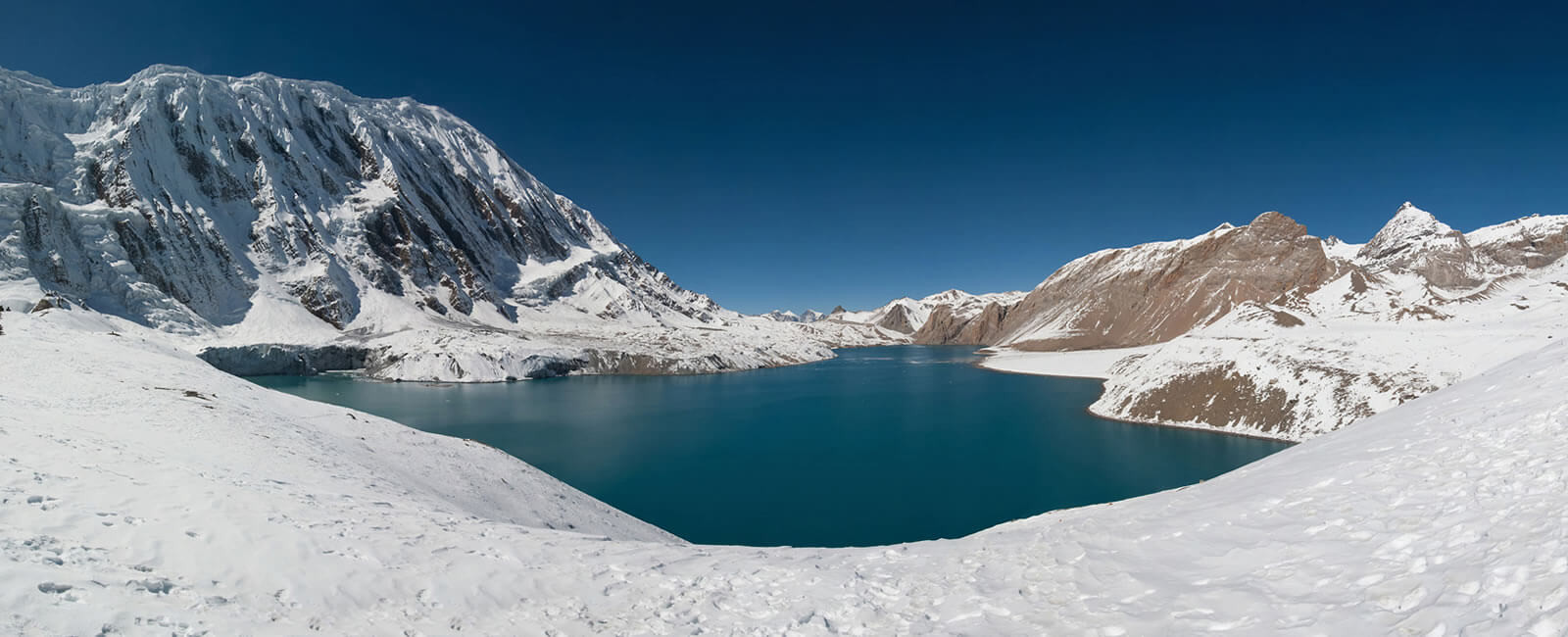
Majority of the people favour the Annapurna Circuit route. People can even make their travelling more interesting by taking an alternative way from the north side as an option. This route is acquiring more recognition among the trekkers these days. World’s first-rate views, diverse culture and nature, exquisite views of mountains such as Khangsar, Nilgiri, Tilicho and Muktinath peak, finest deep valleys, settlement of diverse communities captivate every traveller.
Besides its natural importance, the lake has its mythical significance too. According to Hindu mythology, Tilicho lake is the ancient Kak Bhusundi lake. It is estimated that the sage Kak Bhusundi is the first to deliver the story of Ramayana to Garuda, the king of the birds near the lake.
Gosaikunda Lake
Gosaikunda is another beautiful lake that lies in the Rasuwa district inside the Langtang National Park. It is located at an altitude of 4,380 m and covers 4.0 sq km area. It comprises 1030 hectares in size and declared a Ramsar site in 2007. The lake is taken as the origin of Trishuli river, a fast-flowing river and most famous for rafting. It has been depicted as a religious site for Hindus. It is one of the most beautiful and religious values carried lakes in Nepal.
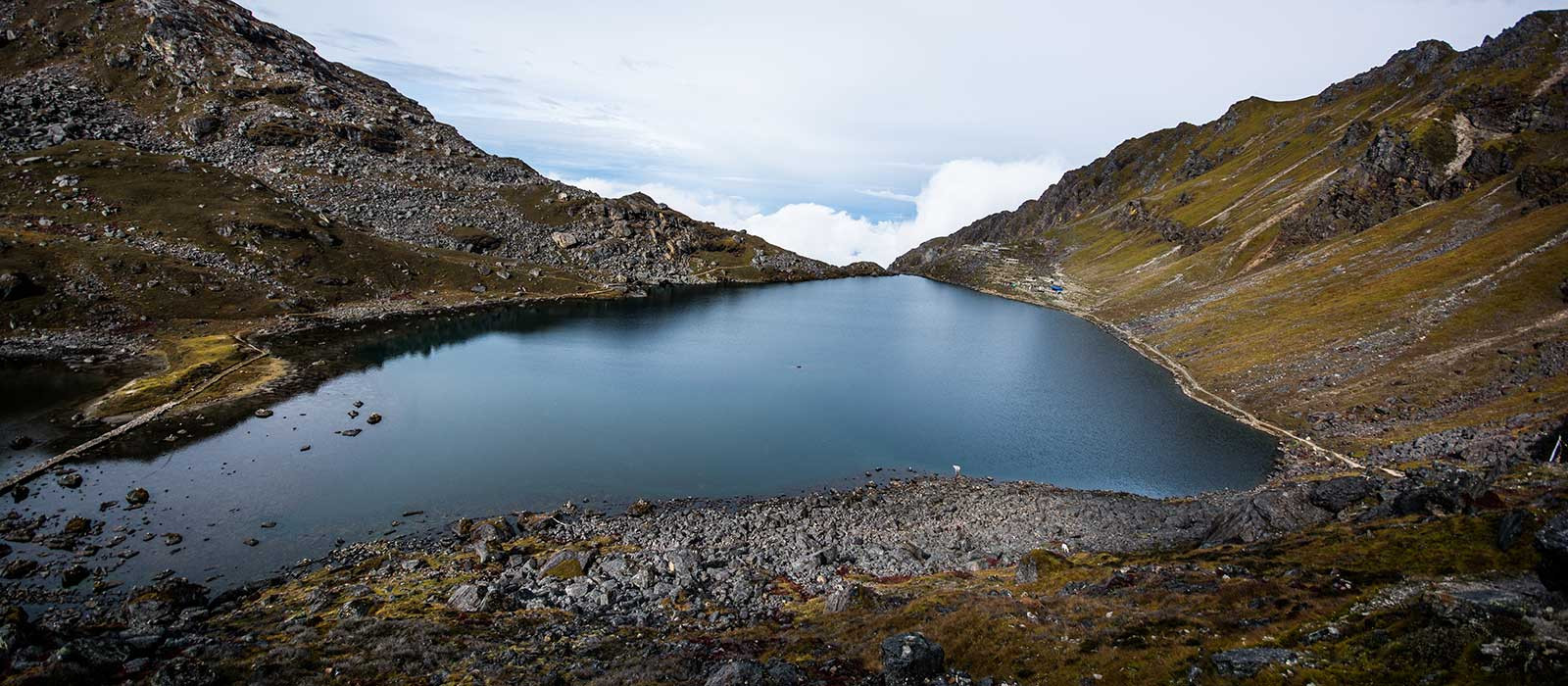
Gosaikunda also is known as the frozen lake is a place that has immense religious significance. According to Hindu mythology, Gosaikunda is the dwelling place of Hindu god Shiva and Gauri. It is believed that the origin of Gosaikunda is related to the Hindu scriptures such as Bhagwat Purana, Vishnu Purana and the great epics Ramayana and Mahabharata. In addition, the water of Gosaikunda is taken as sacred and it is believed that the one who takes a bath in it can be able to cleanse the soul and mind. Also, the devotee believes that God Shiva drunk by the immense grief resulted by the death of his wife. So, he strikes the rock with his Trishul (holy Trident) producing the Gosaikunda lake. Every year, on the auspicious occasion of Janai Purnima, hundreds of thousands of pilgrims visit Gosaikunda.
Besides, it is one of the popular trekking routes as well. This place offers the visitor to explore the holy land, perfectly placed terraced land, settlement of Tamang ethnic groups, rare wild animals, various flora and fauna and panoramic mountain views of Ganesh Himal, Manaslu etc. It gives a brief look of diverse nature and culture. Being surrounded by the beautiful, lush green forests of rhododendron, oak, pine and birch, Gosaikunda is a place that makes every traveller forget their pains and sorrows. A little bit tough to climb the hill, trekkers may be the victims of altitude sickness. The best time to trek the lake is from February to May and late September to December.
Gokyo Lake
Located in Sagarmatha National Park with an altitude of 4700-5000m above the sea level, Gokyo Lakes are taken as oligotrophic lakes. Gokyo Lakes consists of 19 lakes, of which six are main lakes which are considered to be the world’s highest freshwater lake. Amidst the six lakes, Thonak lake is the largest. These lakes were declared a Ramsar Site in 2007. Gokyo lakes are located in Khumjung Village Development Committee of Solukhumbu District in Sagarmatha Zone in north-eastern Nepal. The major lake of Gokyo Lakes is Gokyo Cho which is also known as Dudh Pokhari with an area of 42.9 hectares. Similarly, Thonak Cho is the largest lake with an area of 65.07hectares. Gyazumpa Cho encompasses 29hectares whereas Tanjung Cho has an area of 16.95 hectares and Ngojumba Cho has an area of 14.39 hectares.
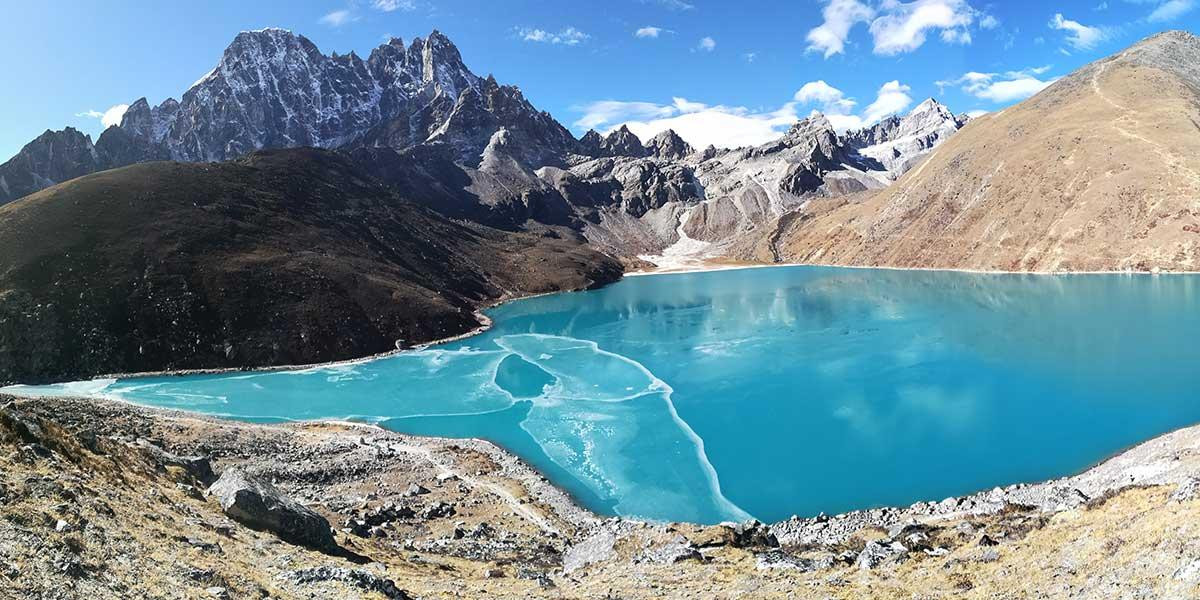
More basically, these lakes have immense hydrological values as there are sources of permanent freshwater. As it is lying in an ecologically unstable zone, this lake system is considered to be naturally weak. The Gokyo lake system is taken as holy by both Hindus and Buddhists. The crowd of people visit this area on the auspicious occasion of Janai Purnima festival which usually occurs in the month of August. It is taken as the temple of Hindu god Shiva and Vishnu, located at the western corner of the lake. This temple is worshipped as the dwelling place of ‘Nag Devata’. It is said that around 7000 tourists visit the lakes annually. Amazing and pristine lakes in Nepal will surely add a mindblowing experience in your trek to this region.
Gokyo Lakes is the most famous tourist destination. It provides an immense opportunity to watch the four gigantic Himalayas of over 8000m of the world such as Mount Everest, Lhotse, Cho Oyu and Makalu and the Ngozumpa glacier, the largest glacier in Nepal Himalayas. More importantly, it provides the opportunity to view the protected flora and fauna in Sagarmatha National Park. Awesome Gokyo Valley, panoramic views of sunrise and sunset of Mount Everest and other peaks from Gokyo Ri (5357m), dazzling glacial lakes, views of the bright turquoise high altitude lakes are the major attraction of the places which will obviously make every traveller feel spellbound.
Bish Hazari Lake
Bish Hazari Lake, also spelt as Beeshazari lake is approximately 5km away from the city of Bharatpur which lies in the southern corner of Chitwan. Actually, it’s a popular tourist hub which was designated as a Ramsar site in 2003. Surrounded by the Chitwan National Park, it encompasses an area of 3200 hectares with an altitude of 286m.
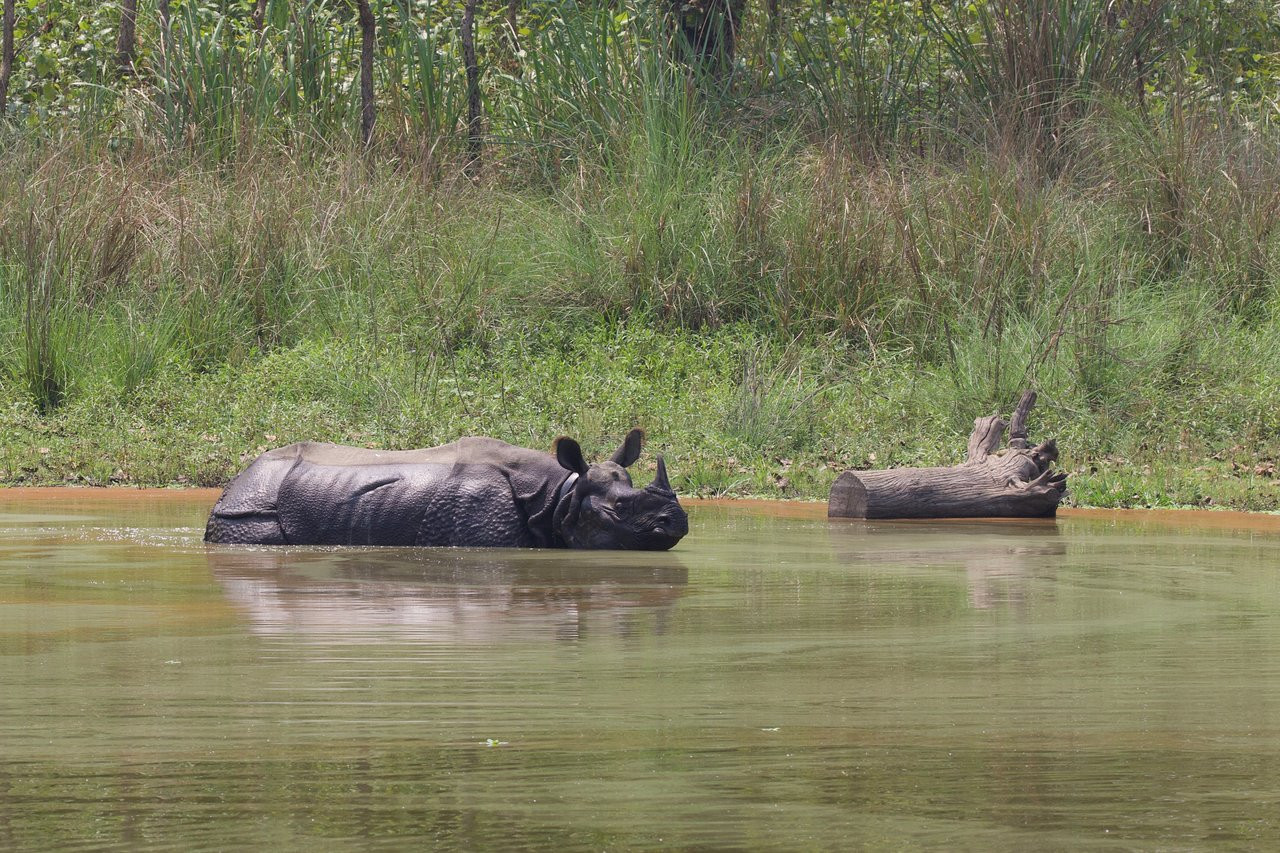
Above all else, it’s an extensive oxbow lake and the keen lovers of nature can be overwhelmed with the sublime beauty of this lake. This exquisite lake provides profound peace and joy to its visitors.
As it is the dwelling place of various endangered species including one-horned rhinoceros, Bengal tiger, sloth bear, gharial, crocodile, white-rumped vulture, it is more famous for bird watching and jungle safari. On the way to this lake, one can hear the amazing sounds of birds as well as animals which is the most significant part of it. Visit this place to observe and feel the intense beauty of nature.
Ghodaghodi Lake
Located at Kailali district at an altitude of 205m, Ghodaghodi lake was declared a Ramsar site in 2003 because of its religious and biodiversity value. It encompasses an area of 2563 hectares that lies on the lower slopes of the Siwalik hills. This wetland comprises 13 large and oxbow lakes and ponds with meadows and marshes. More basically, Ghodaghodi lake is regarded to be the most precious treasure in the flatland of the Far Western Terai.
Moreover, Ghodaghodi lake is considered to be the home to 30 species of mammals, 29 species of fish, 10 species of reptiles, 299 species of birds and more than 470 species of plants. This lake is rich in its various floral and faunal diversity as the plant species of it are very useful for various reasons including medicinal, foods, fruits, fuel woods and, industrial. Local people around the lake use the plant species for medicinal purposes and it will help to maintain huge economic prosperity to the local people if it is properly utilized. It is one of the popular lakes in Nepal in Terai region.
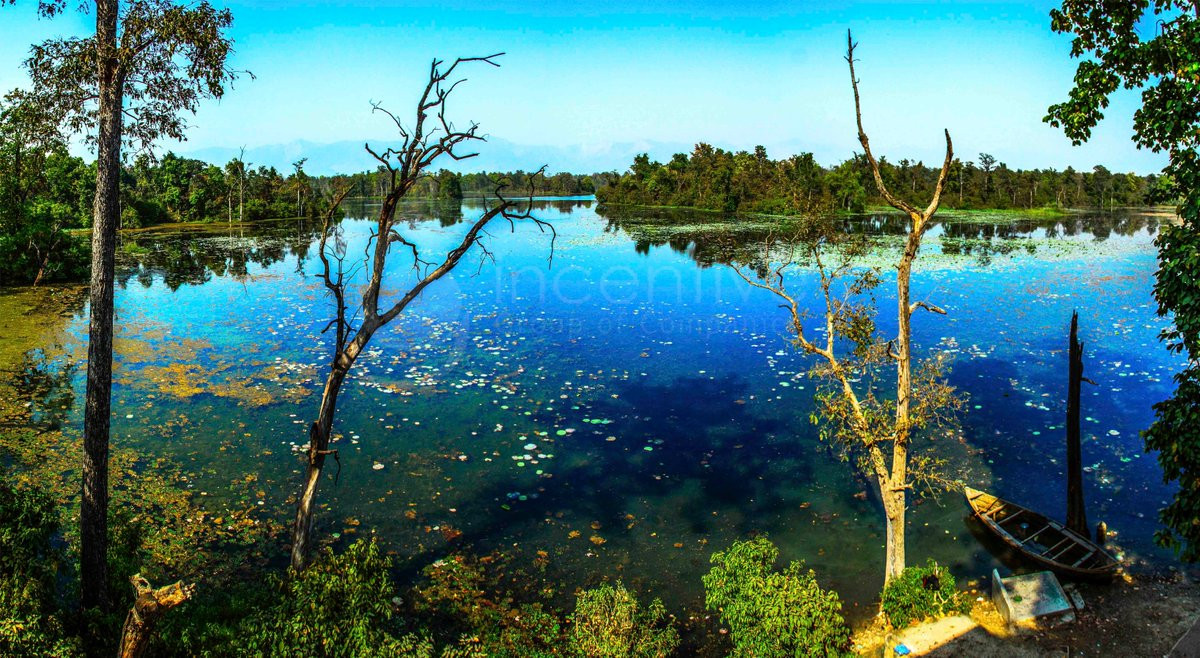
Apart from its biodiversity value, it is also the place of religious significance. There is a temple and people take a ritual dip in it. In December, the indigenous Tharu community makes a celebration of their traditional festival called Agan Panchami by adoring and offering the animals in the temple.
It is a place of great importance from a tourist perspective. Boating in the crystal clear water of this lake provides immense joy. Similarly, having seen the various kinds of birds, one can find the solace moment. The magnificent view of this wetland with its amazing surroundings and wildlife creatures and various plant species are the focal point of this lake. A pleasant view from the Ghodaghodi lake makes the visitor visit the lake time and again.
Mai Pokhari
Mai Pokhari, a pilgrimage site for both Hindu and Buddhist is located around 15km to the north of Ilam District. It was nominated as a Ramsar site in 2008. This lake has a circumference of about one kilometre with an elevation of about 2100m. In the vicinity of this lake, there lies a Maipokhari Botanical Garden which is considered to be the abode of a rock garden, an orchid house, a greenhouse and a variety of plants collected from many regions of eastern Nepal.
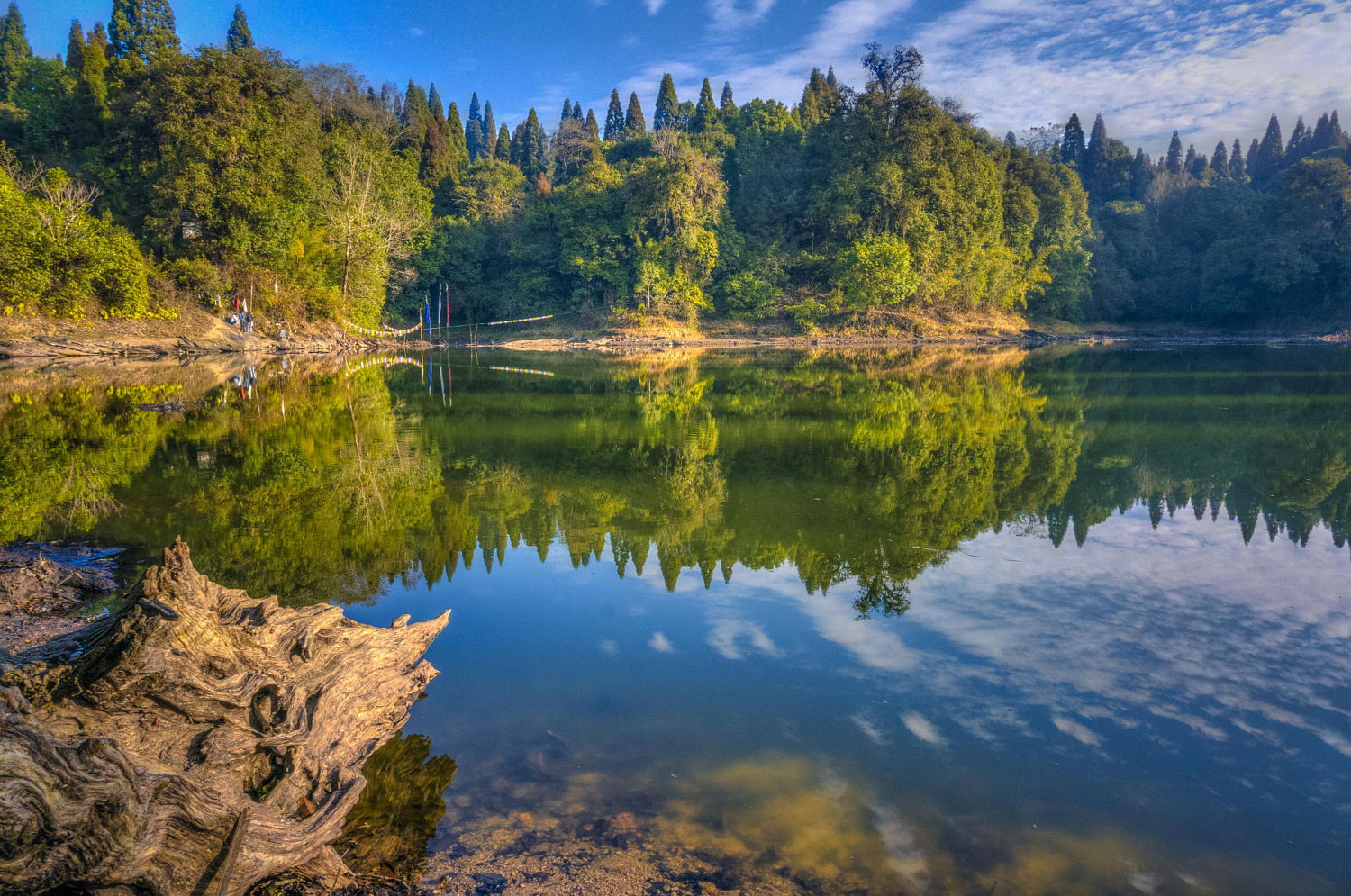
Rare varieties of flora and fauna including white-rumped vultures, leopard cat, goldfish, water lily etc. and other varieties like orchids, porcupines etc. are found in this place. The serene beauty and lush greenery surrounding is the major captivation of this place. In addition, this place offers a variety of opportunities including the mesmerizing view of the tea field, nature hike, magnificent view of the Kanchenjunga, various lakes and waterfalls and a visit to many local temples and so on. The entire scenario from the Maipokhari lakes in Nepal leaves every visitor spellbound.


